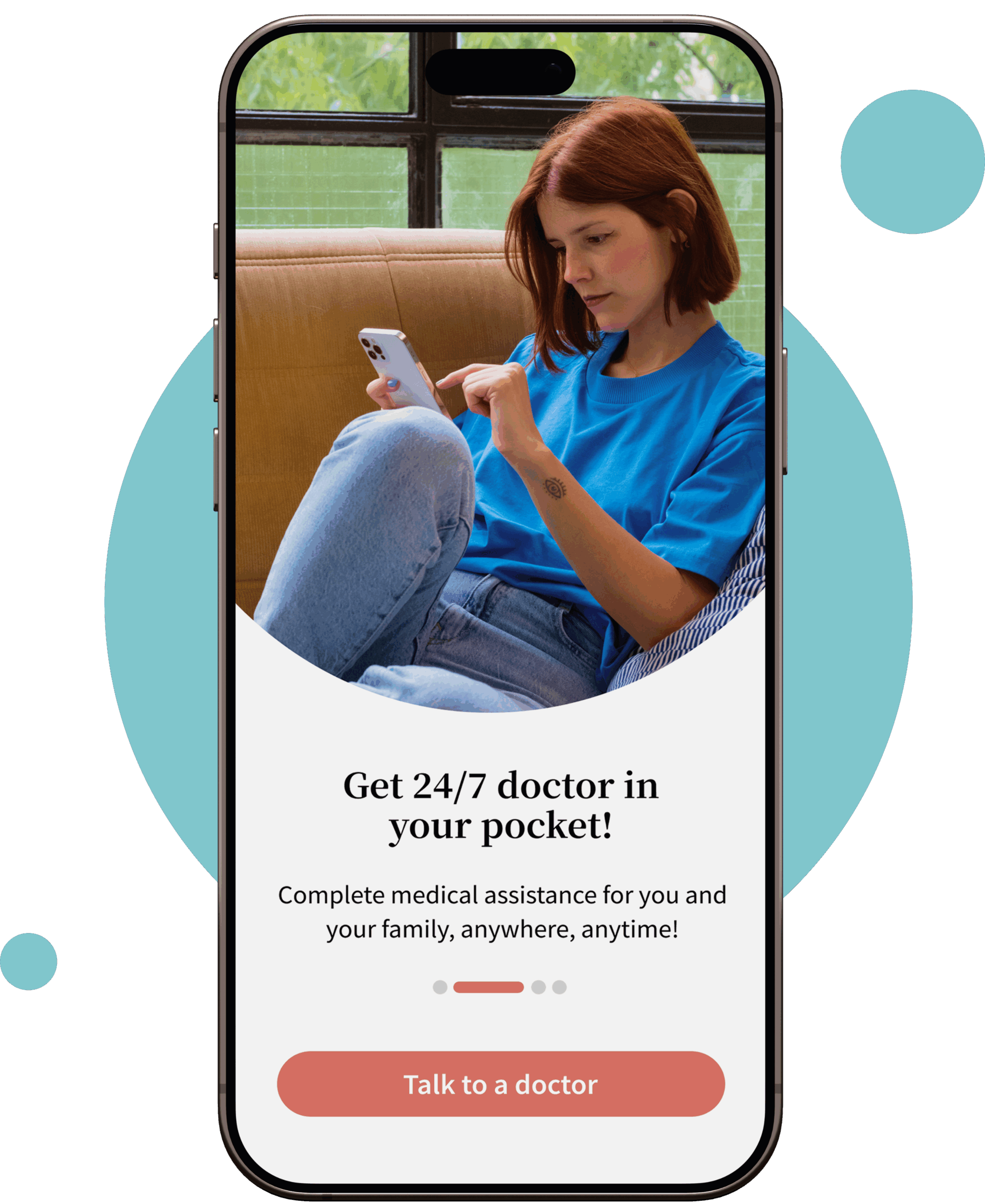Table of Contents
ToggleOverview
Triamcinolone is a drug from the glucocorticoid family. It comes in many forms, including oral, injectable, dental paste, and inhalational. Its use is considered in treating multiple immune-related and allergic diseases, e.g., skin conditions, arthritis, lupus, ulcerative colitis, mouth ulcers, etc. Its use also includes preventing the worsening of COPD or Asthma.
It can have side effects with long-term use. It is an approved drug by FDA. Also available in both generic and brand-name medications. Its use should only be considered in Pregnancy if the benefit is greater than the risk to the fetus. Its use should always be discussed with your doctor.
What is Triamcinolone Cream used to treat?
Triamcinolone is a glucocorticoid. Its potency is five times that of Cortisol and has minimal mineralocorticoid effect. It resembles the natural steroid hormone in the human body produced by the adrenals. Its lipophilic version, triamcinolone acetonide, is used more commonly as medication. It helps with the overactive immune system and reduces swelling, redness, itching, and rashes; it also reduces the release of substances that lead to inflammation.
Triamcinolone is obtainable as both brand-name and generic medication. Its prescription dose & strength depends on the type of Triamcinolone composition and the condition under treatment.
Various Types of Preparations
- Topical: Available in lotion, cream, triamcinolone acetonide ointment usp, and topical spray.
- Dental paste: For oral and gum-related problems.
- Nasal sprays: For allergic sinusitis, rhinitis, and other nasal issues.
- Oral tablets: Used in arthritis and cancers.
- Injectable: For intramuscular, intra-articular use only.
Where oral therapy is not possible, injectable corticosteroid therapy as the intramuscular injection can be used in the following conditions:
1. IntraMuscular Triamcinolone
- Allergic states
Including control of severe allergic conditions not treatable by adequate conventional treatment in atopic dermatitis, asthma, contact dermatitis, hypersensitivity reactions, perennial or seasonal allergic rhinitis, and transfusion-related reactions
- Dermatologic diseases
Bullous dermatitis herpetiformis, pemphigus, exfoliative erythroderma, mycosis fungoides, severe erythema multiforme (Stevens-Johnson syndrome).
- Endocrine disorders
These include congenital adrenal hyperplasia, Primary or secondary adrenocortical insufficiency, cancer-associated hypercalcemia, and nonsuppurative thyroiditis.
- Gastrointestinal diseases
In regional enteritis and ulcerative colitis.
- Hematologic disorders
It is used in Acquired (autoimmune) hemolytic anemia, Diamond-Blackfan anemia, pure red cell aplasia, and secondary thrombocytopenia. - Neoplastic diseases
It is used considered for palliative treatment and management of leukemias and lymphomas.
- Nervous system
In acute exacerbations of multiple sclerosis, cerebral edema is associated with a primary or metastatic brain tumor.
- Ophthalmic diseases are as follows:
Sympathetic ophthalmia
Uveitis
Temporal arteritis - Renal diseases
To cause remission of proteinuria in idiopathic nephrotic syndrome or due to lupus erythematosus.
- Respiratory diseases
It was fulminating pulmonary tuberculosis when used concurrently with appropriate antituberculous chemotherapy, Berylliosis, idiopathic eosinophilic pneumonia, and sarcoidosis.
- Rheumatic disorders
As adjunctive therapy for short-term acute gouty arthritis; ankylosing spondylitis; acute rheumatic carditis; psoriatic arthritis; rheumatoid arthritis, including juvenile rheumatoid arthritis. For the treatment of polymyositis, dermatomyositis, and systemic lupus erythematosus.
2. Intra-Articular Triamcinolone
- The intra-articular injection of triamcinolone acetonide injectable suspension is used as adjunctive therapy for short-term administration in acute and subacute bursitis, acute gouty arthritis, acute nonspecific tenosynovitis, epicondylitis, rheumatoid arthritis, synovitis of osteoarthritis.
What Should I Inform My Doctor About Before I Take Triamcinolone?
It would be best if you informed the doctor about the following conditions:
- Large areas of skin that are damaged or burned
- Infection of skin
- Thin or wrinkled skin
- Any unusual or allergic reaction to Triamcinolone, steroids, other medications, foods, dyes, or preservatives in the past
- Currently pregnant or trying to conceive.
- If you are breast-feeding
- If you have poor blood circulation,
What is Triamcinolone Acetonide Cream used for?
Triamcinolone acetonide topical cream uses and treats the itching, redness, crusting, dryness, scaling, inflammation, and discomfort of various skin conditions. It is used for eczema and psoriasis.
Triamcinolone Acetonide Side Effects
Medications used may, sometimes, cause side effects along with the needed impact on the body. In the case of Triamcinolone, these are similar to the side effects of other steroids. Not all side effects may occur, but if any of the following occur, they may need medical attention. These may vary with the period you use the treatment.
Short-term Treatments
These have very few side effects. You can rarely experience:
- Gastrointestinal bleeding
- Glucose intolerance
- Acute viral infections
Long-term Treatment
- Bronchospasm ( Intense coughing )
- Sinusitis
- Metabolic syndromes, which include symptoms like weight gain due to water retention, high blood sugar and cholesterol, and electrolyte imbalance, as well as cataracts, thrush, osteoporosis, reduced muscle mass, and psychosis)
- Triamcinolone acetonide injection can cause bruising and swelling.
- Thinning, blistering, and burning of the skin
- Allergic reactions
- Anaphylaxis
Some side effects usually do not need medical attention. These side effects may disappear during treatment as your body adjusts to the medicine.
Triamcinolone Acetonide Cream on the Face
As the skin on your face is thin and absorbs more of the steroid than other areas of your body, using a steroid cream on your face is advised to use a low-potency cream. Please do not use it on skin wounds where the skin is broken or open; also, avoid getting the medication in your eyes.
The following are the side effects of this cream:
- Thinning of the skin, especially on areas of thin skin, such as the joint creases, groin, face, armpits, and stretch marks
- Pigment changes
- Enlarged blood vessel formation
- Stretch marks
- Increased risk of developing fungal and bacterial fungal skin infections
- Delay in wound healing ability
- Peeling of the skin
Note: Many of these side effects disappear after discontinuing the steroid, but it may take months.
Triamcinolone vs. Hydrocortisone
Triamcinolone and hydrocortisone are essential medications used in treating skin disorders. The below infographic shows the differences between Triamcinolone and hydrocortisone in tabular form:
| Triamcinolone | Hydrocortisone |
| Period of Usage | |
| Considered suitable for only a maximum of two weeks | To treat some skin diseases, allergies, and rheumatic disorders. They are also used to prevent the worsening of asthma and COPD. |
| Usage | |
| The joint trade names of this medication are Adcortyl, Nasacort Kenalog, etc. | To treat conditions such as high blood calcium, thyroiditis, rheumatoid arthritis, dermatitis, asthma, adrenocortical insufficiency, and COPD. |
| Routes of Administration | |
| Oral injection into a muscle and inhalation | Oral, topical application, or injection. |
| Trade Name | |
| The common trade names of this medication are Adcortyl, Nasacort Kenalog, etc. | The familiar trade names of this medication are Cortef, Solucortef, A-hydrocort, etc. |
| Side Effects | |
| Gastrointestinal bleeding, acute infections, and impaired glucose tolerance. Using this drug for prolonged periods can cause coughing, sinusitis, metabolic syndrome, high blood sugar, joint swelling, etc. | Increased risk of infection and edema. Long-term side effects include osteoporosis, physical weakness, bruising, and candidiasis. |
| During Pregnancy, | |
| It is safe. | During Pregnancy, |
How Can I Use Triamcinolone Acetonide?
Cream
Use this medication only on the skin. Please do not use it on the face, groin, or underarms unless directed by a doctor.
Wash your hands before applying the medication—clean and dry the affected area. Apply a thin film of the drug to the affected area and gently rub it, usually twice or thrice daily or as prescribed by your doctor. Do not cover or wrap the area unless advised by your health professional.
After applying the medication
- If you are not using this medication to treat conditions involving hands, wash your hands.
- When using this medication near the eyes, avoid getting it in contact with them, as this may worsen or cause glaucoma.
- Do not bring in contact with the nose or mouth. If you get the medicine in your nose, eyes, or mouth, wash it with copious amounts of water.
Use this medication only for diseases advised. Please only use it for as long as prescribed.
Dental Paste
To use triamcinolone dental paste:
- Using a cotton swab, press (avoid rubbing) a small amount of paste onto the affected surface to be treated until the paste forms a smooth film. Please do not spread the medicine because it will become crumbly and gritty.
- Apply at bedtime so the paste can work overnight. Other applications of the paste are to be made following your meals.
- Do not use corticosteroids often or for a longer time than your doctor or dentist ordered. Doing so may increase the chance of absorption through the mucous membranes and the possibility of side effects.
- Do not use corticosteroids often or for more extended periods than your doctor or dentist ordered. Doing so may increase the risk of absorption through mucous membranes and the possibility of side effects.
- Do not use it for other mouth problems without checking with your doctor or dentist. This medicine is avoided for many bacterial, viral, or fungal infections.
Nasal Spray
Do not use this medicine for other nose problems without consulting your doctor first.
To use the spray
- Shake the bottle well before each use.
- When using the triamcinolone acetonide nasal spray, it is advised to prime the spray for first use. Press down completely on the top of the pump five times or until a fine mist emerges. Also, Prime if it has not been used for 14 days or more.
- Always blow your nose before using the spray.
- Tilt your head slightly backward and insert the tip of the nose piece into each nostril.
- Close the opposite nostril with a finger. Release one spray and, at the same instance, breathe in through the nostril.
- For a few seconds, hold your breath, then breathe through your mouth slowly.
- Using the same steps, spray the other nostril.
- Wait before you blow your nose after using the spray for at least 15 minutes.
- Wipe the tip of the spray bottle and put the cap back on.
- Use the package check-off chart to help you track the number of sprays you use.
- Throw it away after you use 120 sprays.
Injectable
Triamcinolone acetonide injectable suspension has an extended effect duration, sustaining over several weeks. It is considered following a single intramuscular injection of 60 mg to 100 mg, adrenal suppression sets in within 24 to 48 hours and then slowly returns to normal in 30 to 40 days. This finding correlates with the drug’s extended therapeutic action duration.
If you miss a dose, have it as soon as you remember. Skip the missed dose, If it is near the time of the next dose. Use your next dose at its regular time. Never double the amount to compensate for the missed dose.
Which food or medicines should I avoid while taking Triamcinolone?
You should follow a low-sodium, low-salt, potassium-rich, or high-protein diet.
Triamcinolone may cause an upset stomach. Take Triamcinolone with food or milk.
A lot of medications can interact with Triamcinolone. Some common ones include
- Insulin
- Glimepiride
Dosages for Triamcinolone
The dose of medicines in this class will vary for different patients. If your quantity differs, only change it if your doctor tells you to.
The amount of drug you take depends on the strength of the medicine. Also, the frequency, the time allowed between doses, and the length you take related to the disease for which you use the drug. The overdose is usually not life-threatening, but it can lead to Cushing syndrome in people on prolonged use.
Cream
Apply to the affected area two or three times daily. Rub in gently.
Occlusive Dressing Technique
Use an occlusive dressing to manage psoriasis or other conditions. Rub a small quantity of cream into the lesion until it disappears. Reapply the cream leaving a thin coating on the lesion, cover it with a nonporous plastic film, and seal the edges. If needed, Provide additional moisture by covering the lesion with a damp, clean cotton cloth before the nonporous film is applied or by wetting the affected area with water immediately before using the medication.
The frequency of changing dressings is based on an individual basis. It is easy to apply cream under an occlusive dressing in the evening and to change it in the morning (known as a 12-hour occlusion dressing). When utilizing the 12-hour occlusion dressing regimen, the cream should be used, without occlusion, during the day. Reapplication is essential at each dressing change. Discontinue occlusive dressing if an infection develops and appropriate antimicrobial therapy is instituted.
Dental Paste
- For mouth and gum problems:
Adults—Apply to the affected area twice daily, after meals and bedtime.
Children—Your doctor or dentist must determine the dose.
Nasal spray
The dose will be different for different ages and conditions. The following information is only the average dose of this medicine.
The amount of drug you take depends on the strength of the treatment. The number of doses taken each day, the time between doses, and the length of time you take medicine depend on the medical condition for which you are using the treatment.
- For treatment of perennial allergic and seasonal rhinitis
- Adults & teenagers—Two sprays in each nostril once a day. Your doctor may adjust the dose if needed. Each spray is composed of 55 micrograms (mcg) of Triamcinolone.
- Children 6 to 12 years of age—One puff in each nostril once a day. Some children may need two jets in each nostril once a day. The dose may be adjusted as per need.
- Children 2 to 5 years of age—One spray in each nostril once a day.
- Children younger than two years of age—Use is not recommended.
Injectables
The dose may vary depending on the conditions and age of the patient. It should always be discussed with a doctor. Discuss the age-specific quantity and type of composition of Triamcinolone for your medical concern with one of our online doctors now.
Drug Interactions with Triamcinolone
Interactions can change how your medications work or increase your risk for serious side effects. This document contains only some possible drug interactions. Keep a list of all your products (including nonprescription/ prescription drugs and herbal products) and share it with your doctor and pharmacist. Do not change the dosage or start or stop any medicines without your doctor’s advice.
Some drugs that may interact with Triamcinolone are:
- Aspirin and other nonsteroidal anti-inflammatory drugs (NSAIDs) – These medications can increase the risk of gastrointestinal bleeding when taken with Triamcinolone.
- Anticoagulants – Triamcinolone can decrease the effectiveness of anticoagulant medications, increasing the risk of blood clots.
- Vaccines – Triamcinolone can decrease the effectiveness of vaccines, so it is best to avoid live vaccines while taking this medication.
- Diabetes medications – Triamcinolone can increase blood sugar levels, which can affect the effectiveness of diabetes medications.
- Cyclosporine – This medication can increase the risk of side effects when taken with Triamcinolone.
- Corticosteroids- Such as prednisone
Risk factors and complications of side effects
The risk factors for side effects include
- Poor blood circulation
- Pregnancy
- Breast-feeding
- Children
- Diabetes
- History of reactions to steroid use in the past
- Adrenal tumors
- Cracked or damaged skin
- Thin or discolored skin
Does Triamcinolone weaken the immune system?
Triamcinolone is a synthetic corticosteroid medication that treats various conditions, including inflammation, allergies, and immune-related disorders. Like other corticosteroids, Triamcinolone has the potential to weaken the immune system.
Corticosteroids work by suppressing inflammation and the immune response. While this can be beneficial in treating specific conditions, it can also make individuals more susceptible to infections and other illnesses. Long-term use of corticosteroids, such as Triamcinolone, can also lead to a range of side effects, including weight gain, increased blood sugar levels, and decreased bone density.
However, the degree to which Triamcinolone weakens the immune system depends on the dose and duration of treatment. Short-term use of low doses is generally safe and unlikely to impact the immune system significantly. In contrast, long-term high doses can substantially weaken the immune system and enhance the risk of infections.
Does Triamcinolone affect blood pressure?
Triamcinolone is a corticosteroid medication that helps to treat various conditions, like inflammation, allergies, and certain types of arthritis. While Triamcinolone does not typically associates with changes in blood pressure, it may cause an increase in blood pressure in some individuals.
According to the prescribing information for Triamcinolone, an increase in blood pressure is a potential side effect of the medication. However, this side effect is rare, and most individuals who take Triamcinolone do not experience any changes in their blood pressure.
FAQs About Triamcinolone Answered By your Doctor Online Team
Yes, It is a potent steroid. It acts as Cortisol, a steroid hormone produced by adrenals in the human body.
No, but Nystatin and triamcinolone acetonide cream are available to treat oral and other fungal infections. It is not an antifungal itself by nature.
Usually, it starts to work in a day or two, and doctors prescribe it for a week maximum.
Triamcinolone acetonide, when given orally, rectally, intramuscularly, or intravenously, is banned in competitive sports, as it reduces weight and increases strength and endurance. Triamcinolone acetonide over the counter is not available without a doctor’s prescription.
The incidence of skin lightening with Triamcinolone is not yet studied. But it is usually a rare side effect that associates with Triamcinolone.
Triamcinolone acetonide cream for acne: Intralesional injection can help cure acne.
Skin conditions like eczema, allergies, and rash: Reduces swelling and itching.
Triamcinolone acetonide ringworm: Used in combination with Nystatin for the treatment of fungal infections of the skin like jock and ringworm
Triamcinolone acetonide for yeast infection: Used in combination for the treatment of yeast infections on the skin







